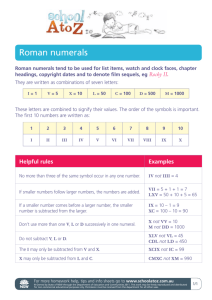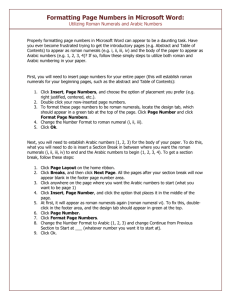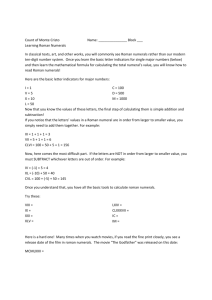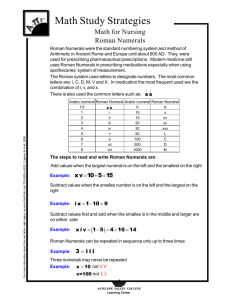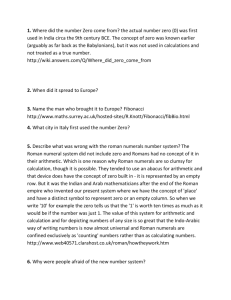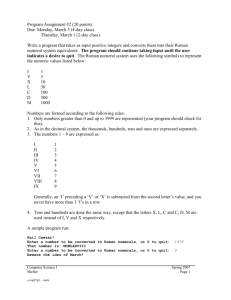A Note on Roman Arithmetic - Applied Probability Trust
advertisement
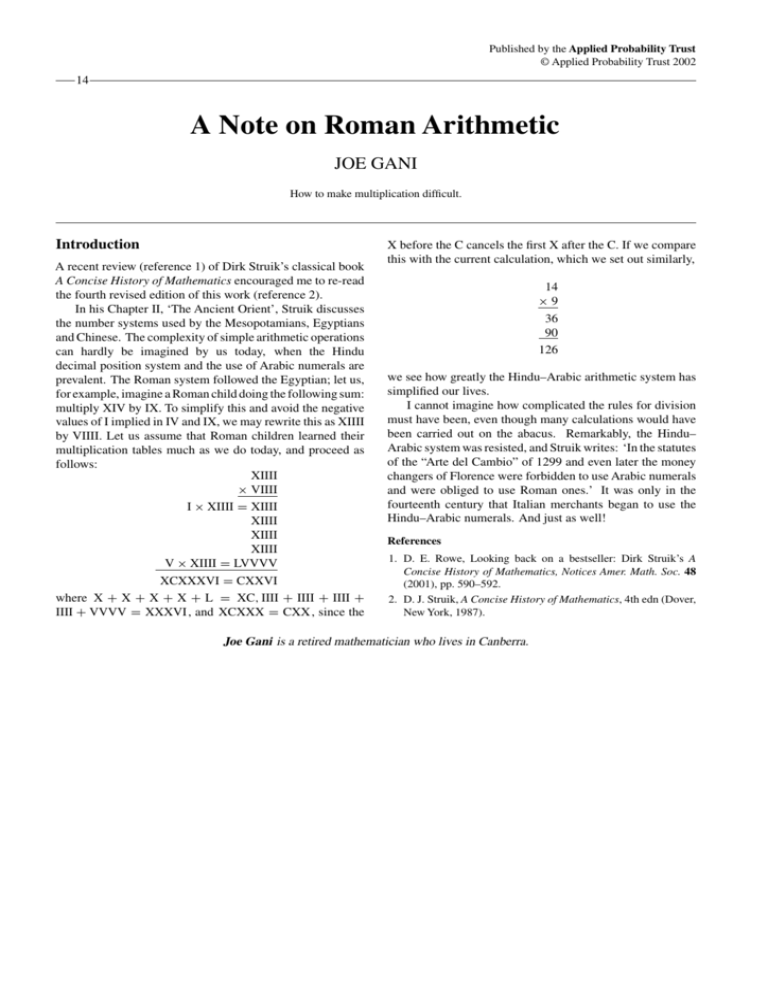
Published by the Applied Probability Trust © Applied Probability Trust 2002 14 A Note on Roman Arithmetic JOE GANI How to make multiplication difficult. Introduction A recent review (reference 1) of Dirk Struik’s classical book A Concise History of Mathematics encouraged me to re-read the fourth revised edition of this work (reference 2). In his Chapter II, ‘The Ancient Orient’, Struik discusses the number systems used by the Mesopotamians, Egyptians and Chinese. The complexity of simple arithmetic operations can hardly be imagined by us today, when the Hindu decimal position system and the use of Arabic numerals are prevalent. The Roman system followed the Egyptian; let us, for example, imagine a Roman child doing the following sum: multiply XIV by IX. To simplify this and avoid the negative values of I implied in IV and IX, we may rewrite this as XIIII by VIIII. Let us assume that Roman children learned their multiplication tables much as we do today, and proceed as follows: XIIII × VIIII I × XIIII = XIIII XIIII XIIII XIIII V × XIIII = LVVVV XCXXXVI = CXXVI where X + X + X + X + L = XC, IIII + IIII + IIII + IIII + VVVV = XXXVI , and XCXXX = CXX , since the X before the C cancels the first X after the C. If we compare this with the current calculation, which we set out similarly, 14 ×9 36 90 126 we see how greatly the Hindu–Arabic arithmetic system has simplified our lives. I cannot imagine how complicated the rules for division must have been, even though many calculations would have been carried out on the abacus. Remarkably, the Hindu– Arabic system was resisted, and Struik writes: ‘In the statutes of the “Arte del Cambio” of 1299 and even later the money changers of Florence were forbidden to use Arabic numerals and were obliged to use Roman ones.’ It was only in the fourteenth century that Italian merchants began to use the Hindu–Arabic numerals. And just as well! References 1. D. E. Rowe, Looking back on a bestseller: Dirk Struik’s A Concise History of Mathematics, Notices Amer. Math. Soc. 48 (2001), pp. 590–592. 2. D. J. Struik, A Concise History of Mathematics, 4th edn (Dover, New York, 1987). Joe Gani is a retired mathematician who lives in Canberra.
